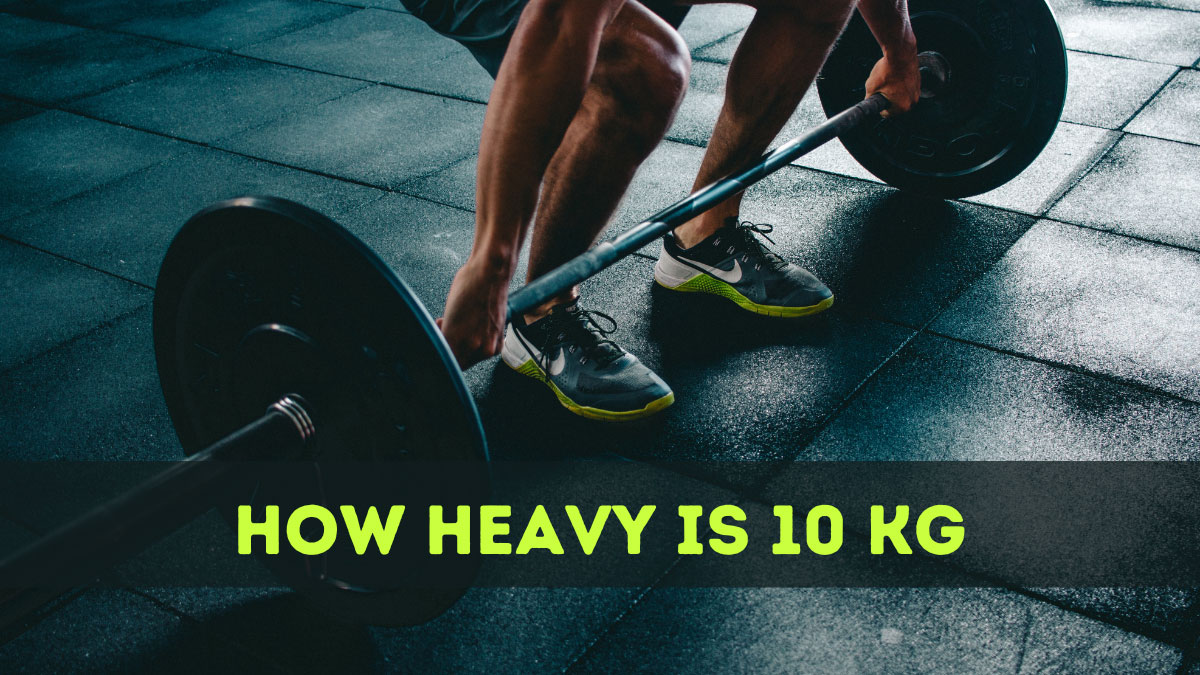How Heavy Is 10 kg? Everyday Comparisons and Conversions
Understanding the weight of 10 kilograms can be surprisingly enlightening, especially when you compare it to everyday objects. At 10 kg, you’re looking at a weight that’s equivalent to about 22 pounds. This is roughly the same as carrying a large domestic cat or a medium-sized dog. It’s a weight that’s manageable for most people, yet it’s substantial enough to make you think twice about lifting it repeatedly.
Picture a newborn human baby, which typically weighs around 2.5 to 4 kg. Now, imagine holding over twice that weight in your arms. This perspective helps you grasp just how much 10 kg truly is. Whether you’re lifting a gym weight or moving household items, understanding the heft of 10 kg can assist in planning your activities and ensuring safe handling. By visualizing these comparisons, you gain a clearer sense of what carrying 10 kg feels like in real-world terms.
Key Takeaways
- Understanding 10 kg in Pounds: 10 kilograms converts to approximately 22 pounds, enhancing comprehension, especially for those using the imperial system.
- Comparison with Everyday Objects: Visualize 10 kg through relatable items like a medium-sized dog, 10 liters of water, or fitness dumbbells to grasp its heft in practical terms.
- Significance in Fitness: A 10 kg weight, common in gyms, is ideal for exercises targeting beginners, blending manageability with challenging strength goals.
- Scientific Insight on Weight: The weight of 10 kg can be calculated as about 98 Newtons on Earth, essential in fields requiring precise weight measures.
- Practical Usage in Households: Items such as a small car tire or a 10 kg bag of flour render a tangible sense of this weight, aiding in everyday decision-making and safe handling.
- Importance of Unit Conversion: Mastering conversions between kilograms and pounds is crucial for global communication, travel, and professional endeavors involving varying measurement systems.
Understanding the Weight of 10 kg
When you consider the substantial mass of 10 kilograms, it’s beneficial to convert this to approximately 22.0462 pounds for clarity if you’re familiar with the imperial system. This conversion uses the factor where 1 kilogram equals 2.20462 pounds. The perceived heaviness of 10 kilograms is more graspable when you compare it to everyday items.

Practical Items Weighing 10 kg
- Dumbbells: A single 10 kg dumbbell offers a tangible feel of this weight, common in fitness settings.
- Dog Breed Example: A grown-up dachshund shares a similar weight profile.
- Domestic Objects: Ten liters of water or a 24-pack of Coca-Cola cans each weigh around 10 kilograms.
- Miscellaneous: A car tire for smaller passenger vehicles or a 10 kg bag of flour embody this weight class.
Scientific Perspective on Mass and Weight
The mass of an object, like 10 kg , always stays the same no matter where you are. But its weight can change depending on gravity . For example, on Earth, gravity pulls things toward the ground with a strength of 9.8 m/s² (meters per second squared) .
To calculate how much something weighs because of gravity, we use this formula:
Weight (W) = Mass (m) × Gravity (g)
In our case:
W=m×g=10kg×9.8m/s2=98N
So, a 10 kg object on Earth weighs 98 Newtons (N).
Think of mass as how much stuff is inside something. That doesn’t change, even if you go to the Moon! But weight (how heavy it feels) changes based on gravity. On Earth, gravity pulls everything down with a force of 9.8 meters per second squared.
Now, let’s say you have something with a mass of 10 kg . To figure out how much it weighs on Earth, you multiply the mass by Earth’s gravity:
Weight = 10 kg (mass) × 9.8 (gravity)
When you do the math:
10 × 9.8 = 98 Newtons
So, on Earth , a 10 kg object weighs 98 Newtons . (A Newton is just the unit scientists use to measure weight or force.)
When scientists or engineers do their work, they need to keep in mind how weight changes depending on where you are because gravity can be different in other places!
Converting Kilograms to Pounds: Why It Matters
Understanding how to convert kilograms to pounds enhances your comprehension of weight-related metrics across different systems. This knowledge proves essential while traveling or in professions requiring precise unit conversions. The international avoirdupois pound used widely equates to about 453.59237 grams according to global standards set in 1958. Armed with these conversion facts, you’re better prepared for engaging in global communication and various activities that span both metric and imperial systems.
Everyday Objects Weighing 10 kg
Understanding the weight of 10 kilograms can be easier when you relate it to familiar items. Here’s how certain everyday objects match this weight.
A Dumbbell
In fitness, dumbbells are common, and a 10 kg (about 22 pounds) dumbbell is typical. This weight is suitable for strength training exercises, balancing manageability with effectiveness. You might often see a pair of 5 kg dumbbells in a standard set, allowing for a comprehensive workout routine.
Ten Liters of Water
Water, with its density of 1 kg per liter, serves as an ideal reference. Ten liters of water weigh exactly 10 kg (or approximately 22 pounds). Considering everyday scenarios, carrying a 10-liter jerry can of water helps visualize this weight. This example is practical, especially when you’re moving or transferring liquids in a household setting.
Converting 10 kg to Pounds
Understanding weight conversions is essential, especially when interacting with different measurement systems worldwide. To convert 10 kilograms to pounds, you use a specific conversion factor, providing clarity for practical situations.
Quick Conversion Chart
A quick reference chart provides an easy way to grasp conversions from kilograms to pounds. Here’s a compact chart to help with various weights:
| Kilograms (kg) | Pounds (lbs) |
|---|---|
| 1 kg | 2.2046 lbs |
| 2 kg | 4.4092 lbs |
| 3 kg | 6.6139 lbs |
| 4 kg | 8.8185 lbs |
| 5 kg | 11.0231 lbs |
| 6 kg | 13.2277 lbs |
| 7 kg | 15.4324 lbs |
| 8 kg | 17.637 lbs |
| 9 kg | 19.8416 lbs |
| 10 kg | 22.0462 lbs |
This chart aids in understanding how metric and imperial systems relate, especially when weighing luggage for travel or planning workouts with weights.
Conversion Examples
Applying the conversion factor simplifies complex tasks. For instance, if weighing a 10 kg dumbbell, you multiply by 2.20462, exemplifying the dumbbell’s weight as 22.0462 pounds. When considering everyday items, picture a ten-liter water container as having approximately the same weight. This visualization helps in scenarios like packing or carrying items where understanding weight differences ensures safety and efficiency.
When communicating in contexts that require precise measurements, knowing these conversions enhances your ability to interact seamlessly across international domains. This understanding not only helps when traveling but also in professions requiring detailed knowledge of different unit systems.
Practical Uses of a 10 kg Weight
Exploring the practical applications of 10 kg highlights its significance in various contexts. Understanding these can enhance your ability to accurately measure and utilize this weight in daily life.
Fitness Equipment
A 10 kg dumbbell is a popular tool among fitness enthusiasts, especially beginners. It’s perfect for exercises like shoulder presses, bicep curls, and rows, helping build muscle and aid weight loss. If you’re starting out, this weight offers a manageable yet effective challenge. Provided your routine is well-structured, you can gradually increase the weight as you build strength.
Everyday Household Items
Understanding the weight of common household objects can be quire useful. Here are examples of items weighing around 10 kg you may encounter daily:
- Car Tire: A smaller passenger car tire, such as those on SUVs with 20-inch wheels.
- Bowling Balls: Two standard bowling balls combined weigh about 10 kg.
- Paper Reams: Four letter-size reams, each approximately 5 lbs (2.27 kg), total 10 kg.
- Water: Ten liters of water, as one liter equals one kg, makes for a precise reference.
- Flour: A 10 kg bag of flour serves as an ideal measurement tool for visualizing this weight.
Such knowledge not only aids in practical estimation but also helps in managing related tasks like moving or organizing household items.
Conclusion
Understanding the weight of 10 kg through relatable examples and practical applications can significantly enhance your ability to handle and manage tasks involving this weight. Whether you’re lifting a 10 kg dumbbell at the gym or organizing household items like bags of flour or water containers, knowing what 10 kg feels like helps in planning and executing activities safely. Additionally, familiarizing yourself with weight conversions between kilograms and pounds is crucial, especially when traveling or engaging in activities that require precise measurements. By grasping these concepts, you can ensure efficiency and safety in your daily routines and interactions across different measurement systems.







